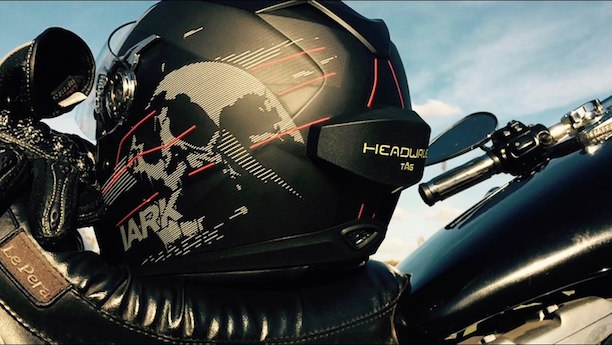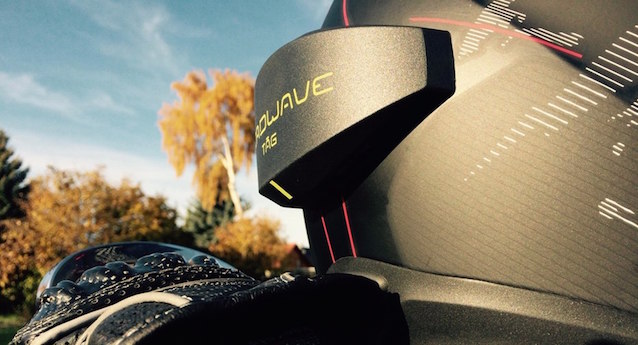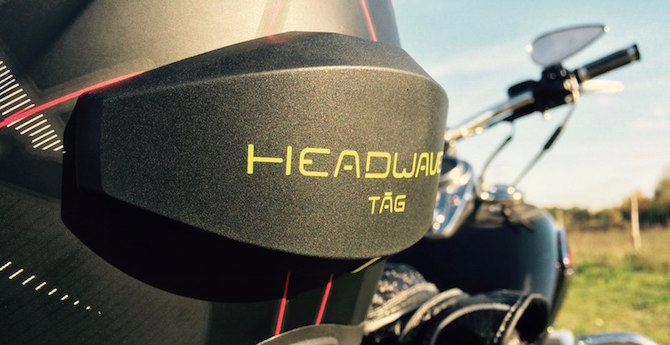Instead of wearing headphones under your helmet or installing speakers inside, the Headwave Tag turns your helmet into a speaker.
We reported on the device back in February 2104 and it’s taken this long to perfect it and get the unit to market.
The German Headwave Tag attaches to the outside of the helmet and uses a magnetic mechanism to produce “surface transduction” which transmits vibrations through the helmet.
Music is streamed to the system from a smartphone and controlled using an app, so no cables are involved.
Headway founder and CEO, and motorcycle fan, Sophie Willborn, says she was frustrated with the sound quality in her helmet and cumbersome cables and speakers. She says the new system ”turns the whole helmet into an acoustic resonating body with outstanding audio quality.”
“It’s like being in a soundbox. The whole helmet is the acoustic resonance body so you can hear the music from everywhere around you. The best thing is, you can feel the bass. The whole helmet vibrates when you hear music with strong bass.”
The lack of bass has been the major drawback with almost every earphone or helmet speaker system we’ve used.
The only exceptions are the Bose noise-reducing earphones which feel uncomfortable and the personally moulded Earmold plugs but they have very poor treble quality.

The unit measures 123 x 61 mm (4.8 x 2.4 in) and extends just over 2cm (0.8in) out from the helmet.
It is able to withstand speeds up to 300km/h (186mph) and is both water- and shock-proof. It has a 600-mAh li-ion battery that lasts for around 6-8 hours and is charged via USB.
While it will play music in your helmet, it won’t replace a Bluetooth communicator unit because there is no microphone.
The Headwave Tag is available to order now at €299 (about A$480 and US$324).
We’ve ordered one and will report on its quality in the coming weeks.



